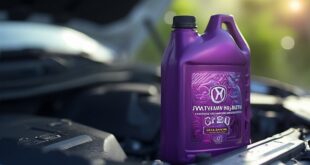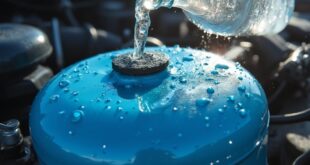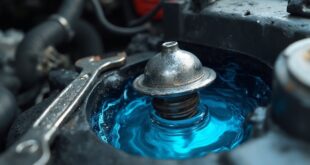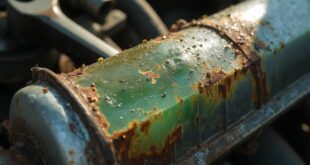Low coolant levels can result from several issues. Common causes include external leaks from hoses or gaskets, problems with the water pump or radiator, and defective radiator caps. Symptoms often include dashboard warning lights, rising temperature gauges, and a sweet antifreeze smell. Driving with low coolant can lead to overheating and severe engine damage. Regular checks and prompt repairs are essential to prevent problems. Exploring the specific causes and solutions can help maintain engine health.
Common Causes of Low Coolant Levels
When a vehicle experiences low coolant levels, several common causes may be at play. External leaks are often the primary culprit, stemming from hoses, sensors, or gaskets.
Water pump, radiator, and thermostat issues can also lead to coolant loss, as can damaged or corroded radiators. Worn water pump seals and faulty intake manifold gaskets may contribute to coolant depletion and combustion.
Additionally, a defective radiator cap can release coolant prematurely. High temperatures can cause evaporation, further reducing coolant levels.
Identifying these issues early is essential to prevent engine damage and maintain vehicle performance.
Symptoms Indicating Low Engine Coolant
Low engine coolant levels can manifest through several distinct symptoms, signaling potential issues within the cooling system. Recognizing these signs early can help prevent further damage to the engine.
Common symptoms include:
- Dashboard warning lights indicating low coolant status.
- Fluctuating temperature gauges, which may suggest air in the system.
- A sweet smell of anti-freeze, possibly signaling a leak.
Additionally, drivers may notice rising temperature gauges or steam from the engine.
Addressing these symptoms promptly is essential to maintaining ideal engine performance and preventing overheating.
Risks Associated With Driving on Low Coolant
Driving with insufficient coolant poses significant risks to engine health and performance.
Low coolant levels can introduce air into the cooling system, creating airlocks that hinder coolant flow and lead to inefficient cooling. This inefficiency increases the likelihood of engine overheating, which can result in costly repairs such as blown head gaskets or cracked engine blocks.
Additionally, prolonged exposure to low coolant can escalate wear on engine components, ultimately risking complete engine failure.
The potential for severe damage necessitates immediate attention to coolant levels, as neglecting this issue can lead to extensive and expensive repairs down the line.
Effective Solutions for Low Engine Coolant
Addressing coolant level issues promptly is essential for maintaining engine health and preventing costly repairs.
To guarantee peak performance, vehicle owners should adopt effective solutions for low engine coolant. Key actions include:
- Regularly checking and topping up coolant levels with the manufacturer-recommended type.
- Inspecting for visible leaks and promptly repairing any identified issues.
- Scheduling routine maintenance checks to monitor coolant levels and system health.
These steps help prevent further coolant loss and maintain the vehicle's cooling system efficiency, ultimately protecting the engine from potential damage and costly repairs.
Steps to Check Your Coolant Levels
Checking coolant levels regularly is vital for guaranteeing peak engine performance and preventing overheating.
To check coolant levels, one must first locate the coolant reservoir. It is essential to verify the engine is cool before proceeding to avoid burns. The fluid level should be inspected against the recommended markings on the reservoir.
Additionally, one should look for any discoloration or debris, which could indicate contamination. Visible leaks around hoses and connections should also be checked.
If the coolant level is low, topping up with the appropriate type is necessary to maintain optimal engine function.
Frequently Asked Questions
How Often Should I Check My Coolant Levels?
The frequency of checking coolant levels depends on the vehicle's age and usage. Experts recommend inspecting coolant levels at least monthly, or before long trips, to guarantee ideal engine performance and prevent overheating issues.
Can I Use Water Instead of Coolant?
Using water instead of coolant is not advisable due to its lower boiling point and lack of corrosion inhibitors. This can lead to overheating and damage, making proper coolant essential for peak engine performance and longevity.
What Type of Coolant Is Best for My Vehicle?
Determining the best coolant type for a vehicle involves consulting the owner's manual, which specifies the recommended formulation, typically based on the vehicle's make and model, ensuring ideal performance and protection against corrosion and overheating.
How Can Weather Affect Coolant Levels?
Weather can greatly affect coolant levels, as extreme temperatures may lead to increased evaporation or condensation. Additionally, harsh conditions can exacerbate leaks in hoses and connections, further diminishing coolant availability in the engine system.
Is It Safe to Drive With a Low Coolant Warning?
Driving with a low coolant warning is unsafe. Insufficient coolant can lead to overheating, engine damage, and costly repairs. Immediate attention is necessary to prevent severe consequences and guarantee the vehicle operates efficiently and safely.
 Car Service Land Coupons for Oil change, Tires, Wheel alignment, Brakes, Maintenance
Car Service Land Coupons for Oil change, Tires, Wheel alignment, Brakes, Maintenance




